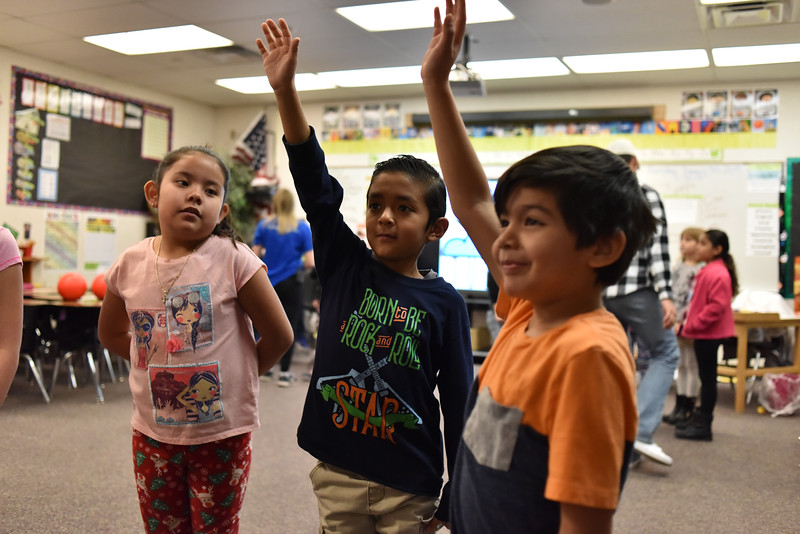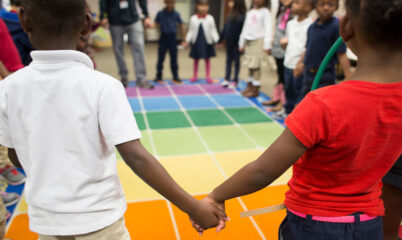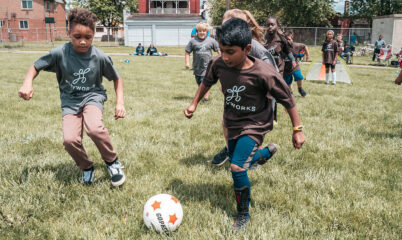Playworks believes in a trauma-sensitive approach
Educators should focus on providing a trauma-sensitive approach to the reopening of school.
Students are all having different experiences right now. For some students, the shutdown of schools due to COVID has provided them with a welcome reprieve from toxic situations or stressors. For others, it has created an increased chance that they’re experiencing Adverse Childhood Experiences or new stressors.
“A trauma-sensitive school is one in which all students feel safe, welcomed, and supported and where addressing trauma’s impact on learning on a school-wide basis is at the center of its educational mission. It is a place where an on-going, inquiry-based process allows for the necessary teamwork, coordination, creativity, and sharing of responsibility for all students, and where continuous learning is for educators as well as students,” says traumasensitiveschools.org.
What educators should consider
The transition back to school may not be easy for every kid. And we need to be thinking about the whole child during this time to ensure that school feels like a safe place for every child to learn and grow, not just to shrink a gap in academic achievement. With a trauma-sensitive approach, educators can help ease that transition.
A trauma-sensitive approach has several components which educators should aim to practice.
- Predictability of routine
- By creating a predictable routine for kids whose life isn’t predictable, educators can provide kids with the routine and consistency that they need to feel like they are in a safe environment. That allows them to feel comfortable enough to learn and grow.
- Naming social skills
- By calling out the social skills kids are practicing with different activities, educators can reinforce both the practice and the importance of those skills.
- Choice and voice
- Kids should have the ability to choose how they engage at school each day. Educators and peers should listen to ensure kids feel heard and understood. In addition, if recess or play needs to look different, consider intentionally working with students to design recess, create games, identify boundaries, and clarify rules. This buy-in promotes relationship building and will reinforce everyone’s collective understanding of change.
- Building rapport and connection
- The relationships between kids and their educators sets the stage for how a child might feel at school and their ability to connect with others. If a child is demonstrating behavior that isn’t ideal, it is critical for educators to connect with the child one-to-one and be curious rather than calling attention to the behavior.
How to apply Playworks techniques to the transition back to school
- Predictability of routine
- It is the role of the educator to help set up their time with the student so that students know what to expect each day. An example of this is that each day, no matter what else is happening in the school day, the class game time format is the same. Kids know what to expect. Perhaps each Monday you introduce a new game and every day of the week it is modified. Every day the class plays for 5 minutes and then always have a debrief of the skill. The same verbiage is used to set the boundaries, get the attention of kids, and to end the game.
- Naming social skills
- When practicing games with kids, it is important to always clearly state the social skills that can be practiced through the game. It is ok if there are several. The ideal way to do this is to build a theme to practice over time in different ways, such as a social skill like self-control and different games about various facets about self-control such as managing one’s emotions, empathy, self-motivation, etc.
- Choice and voice
- Empowering kids to be heard and building a community of trust is essential. It starts with giving kids the opportunity to choose how they show up and participate. The goal is to meet kids where they are and allow them to share what they are going through. It is important to also engage voices that are hesitant to speak. We need to open the floor to give kids a chance to make decisions, feel empowered, own their mistakes, and that allows for them to feel safe at school. A simple way to do this is to intentionally give kids several options throughout the day such as ‘what are we playing’ and choosing your own animal, for example, as a part of a game. Another example to help would be the 3 A’s: Appreciations, Ah-ha’s, and Apologies. This practice gives every kid the chance to step up and back, own their mistakes, build connections, and name skills they’ve learned. Open the space for all kids every day to step up or step back with saying any of the 3A’s for the day.
- Building rapport and connection
- It is important to be curious and not furious when you don’t understand a child’s behavior. To build rapport, listen to understand. Rather than taking kids out of activities as a punishment or bringing attention to negative behavior, pull them aside privately and connect with them. If you are on video, try to set some norms to build rapport, such as making connections via a group chat feature or during a break while students are working on an activity. You can also consider setting an expectation with the class that you will chat a child a particular emoji one-to-one when you want them to consider how they might bring how they’re feeling to the 3A’s and letting them know that you’d like to connect with them later.
What an ideal day might feel like for a kid no matter if it is in person or virtual
- Student X comes to class and holds up the number of how they’re feeling today.
- They settle in and before the first lesson, the game Superstar or Partner to Partner is played. A different kid gets to lead, different physical motions can exist, and different questions can be asked, but every kid understands that the game will happen every day remotely or in person.
- During a break between lessons, an educator or youth leader hosts a game and names the skill that the game helps students practice.
- If a student isn’t showing the ideal behavior that day, the educator or a youth leader can connect with that student privately to chat and then encourage them to consider their behavior before the 3A’s.
- At the end of every day, the educator opens the floor for kids to use their voice to engage in the 3A’s. Kids take turns volunteering to say appreciations, ah-ha’s, and apologies. They can choose which one they need to or want to say that day.
Looking for guidance based on the schedule and systems your school is using to serve kids next school year? Check out our Recess Guidelines and Safe Return to Play Guide.
Are you looking for more information to help you create a trauma-sensitive approach? Here are some of our favorites:
- https://traumasensitiveschools.org/
- https://www.tolerance.org/magazine/a-trauma-informed-approach-to-teaching-through-coronavirus
- https://www.shapeamerica.org/advocacy/K-12_School_Re-entry_Considerations.aspx (Page 9)



